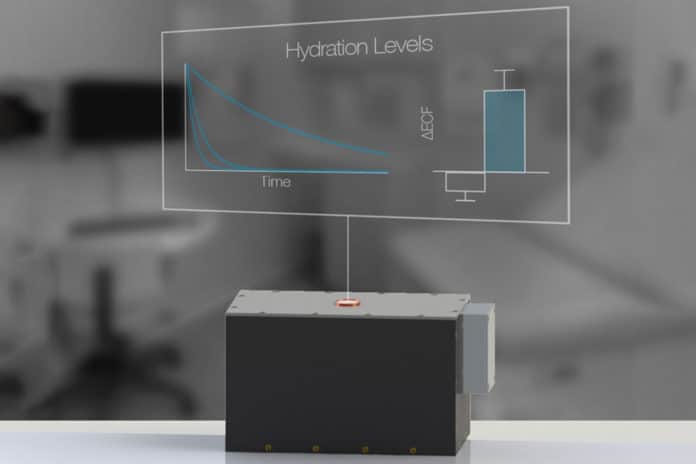The kidneys play a role in maintaining the balance of body fluids and regulating blood pressure, among other functions. For patients with kidney failure who need dialysis, removing fluid at the correct rate and ceasing at the correct time is basic. This normally requires to think about how much water to evacuate and cautiously observing the patient for abrupt drops in blood pressure.
Assessment of hydration status is complex and difficult to achieve. Few assessment methods have been validated to accurately measure the fluid compartments in the body, but they have little application in practice. Different techniques have been developed to determine hydration status for the use in clinical settings, but their diagnostic accuracy remains questionable.
MIT scientists now have developed a portable sensor to precisely measure patients’ hydration levels using a technique known as nuclear magnetic resonance (NMR) relaxometry. This type of device is proficient for not only dialysis patients but also people with congestive heart failure, as well as athletes and elderly people who may be in danger of becoming dehydrated.
Michael Cima, the David H. Koch Professor of Engineering in MIT’s Department of Materials Science and Engineering said, “There’s a tremendous need across many different patient populations to know whether they have too much water or too little water. This is a way we could measure directly, in every patient, how close they are to a normal hydration state.”
The quantitative NMR works by measuring a property of hydrogen atoms called T2 relaxation time offers precise measurements. The T2 signal measures both the environment and quantity of hydrogen atoms (or water molecules) present.
Colucci said, “The beauty of magnetic resonance compared to other modalities for assessing hydration is that the magnetic resonance signal comes exclusively from hydrogen atoms. And most of the hydrogen atoms in the human body are found in water molecules.”
The researchers used their device to measure fluid volume in patients before and after they underwent dialysis. The results showed that this technique could distinguish healthy patients from those needing dialysis with just the first measurement. In addition, the measurement correctly showed dialysis patients moving closer to a normal hydration state over the course of their treatment.
Cima said, “The water retention issues of congestive heart failure patients are very significant. Our sensor may offer the possibility of a direct measure of how close they are to a normal fluid state. This is important because identifying fluid accumulation early has been shown to reduce hospitalization, but right now there are no ways to quantify low-level fluid accumulation in the body. Our technology could potentially be used at home as a way for the care team to get that early warning.”
The study appeared in journal Science Translational Medicine. Other authors of the paper include MIT graduate student Matthew Li; MGH nephrologists Kristin Corapi, Andrew Allegretti, and Herbert Lin; MGH research fellow Xavier Vela Parada; MGH Chief of Medicine Dennis Ausiello; and Harvard Medical School assistant professor in radiology Matthew Rosen.
